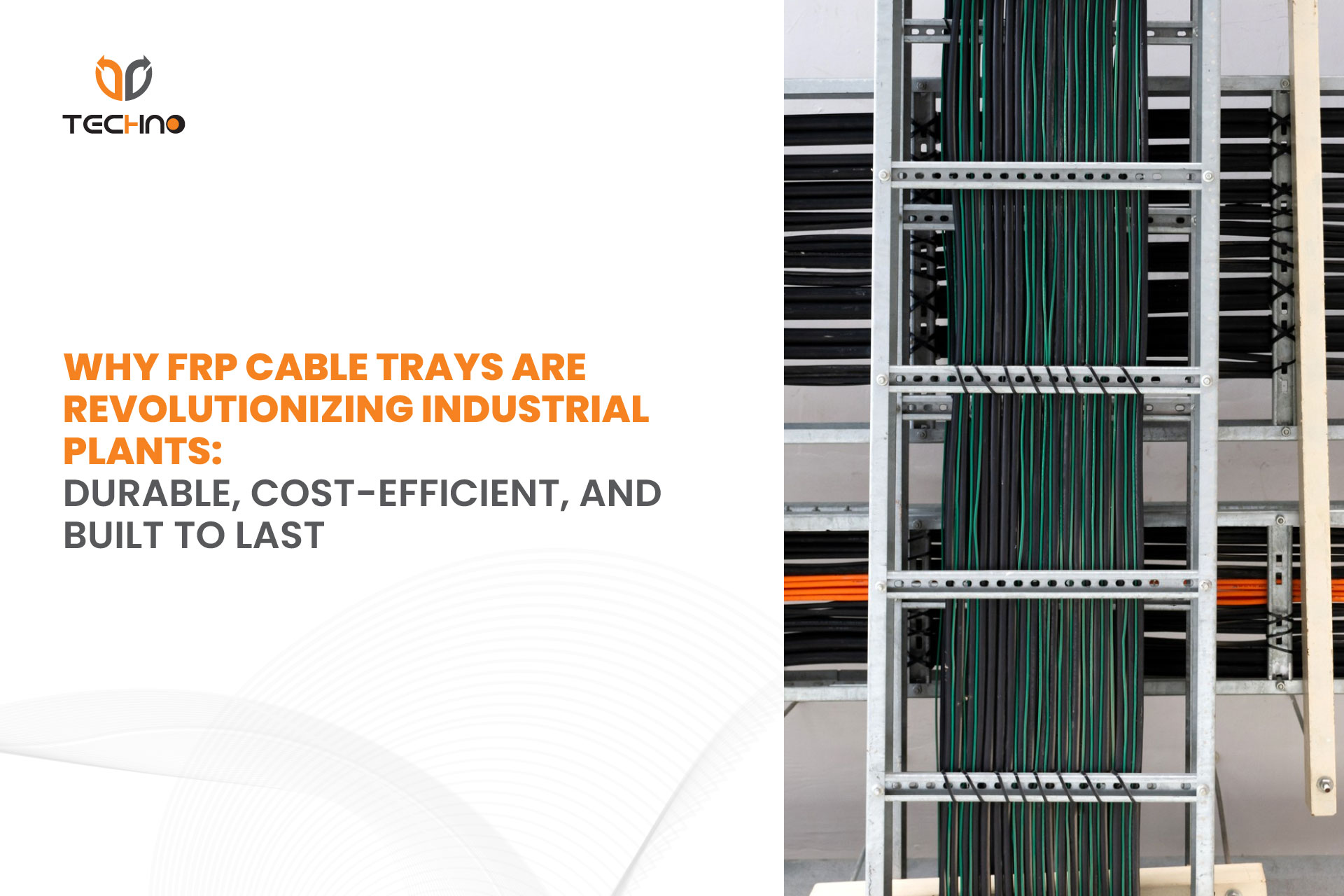
In today’s industrial infrastructure, reliable and efficient cable management is critical. Whether in chemical plants, power generation facilities, waste water treatment units, or offshore platforms, cables must be safely routed, properly supported, and protected from harsh environments. One solution gaining traction is the use of fiber-reinforced polymer (FRP) cable trays. Their combination of durability, safety, and cost-efficiency makes them ideal for many industrial scenarios.
In this article, we will explore the advantages of FRP cable trays, their key applications in industrial plants, and how they can provide long-term value for engineers and plant operators.
What are FRP Cable Trays?
FRP (fiber-reinforced polymers) cable trays are cable-support systems manufactured using a mixture of resin and reinforcing fibers (usually glass fiber). These trays provide structural support for heavy cable runs, as well as environmental resistance and electrical insulation.
According to industry research, FRP cable trays last up to 30 years and are three times more corrosion-resistant than steel trays, ensuring long-term cost efficiency.
Key characteristics include:
- Non-conductive and non-magnetic material structures improve safety in electrical systems.
- Exceptional corrosion and chemical resistance – ideal for aggressive industrial environments.
- High strength-to-weight ratio: Stronger but lighter than many metal alternatives.
- Fire-retardant versions are available and have excellent durability in outdoor/harsh environments.
Why Choose FRP Cable Trays in Industrial Plants?
Here are the major benefits that make FRP cable trays a compelling choice in industrial settings:
1. Corrosion & Chemical Resistance
Industrial plants often involve exposure to moisture, acids/alkali, salts, solvents, or high humidity. Traditional metal trays can suffer from rust, galvanic corrosion, or degradation over time. FRP trays are largely unaffected by these conditions, reducing maintenance and replacement requirements.
2. Electrical Safety (Non-conductivity)
Since FRP is non-metallic, it does not conduct electricity. This means less risk of accidental grounding, less electromagnetic interference, and increased safety when running mixed power/control/data cables in an industrial plant.
3. Lightweight & Ease of Installation
Because FRP trays are lighter than steel or some aluminum alternatives, installation can be faster and less labor-intensive. This leads to cost savings in the installation phase and may also allow for less bulky supporting structures.
4. Long-Term Cost Efficiency
While the initial material cost of FRP may be higher than basic metal trays, the lifecycle cost often favours FRP because of lower maintenance, fewer replacements, and less downtime.
5. Fire & UV/Weather Resistance
Industrial plants often require compliance with fire safety standards; FRP trays can be manufactured using fire-retardant resins and coatings. In outdoor or exposed settings (rooftops, coastal plants), the material resists UV degradation and weathering.
Typical Applications in Industrial Plants
Here are some specific use-cases in industrial environments where FRP cable trays excel:
Chemical & Petrochemical Plants
Due to constant exposure to corrosive fumes, acids, alkalis, and high humidity, these plants create a harsh environment for cable tray systems. FRP trays withstand chemical attack, maintain integrity and reduce maintenance cycles.
Power Generation & Utilities
From thermal power stations to renewable energy, cable routing often demands a long lifetime, high safety standards, and minimal interference. The non-conductive nature and durability of FRP trays make them suitable for such applications.
Water & Wastewater Treatment Facilities
These installations contend with moisture, chemicals, microbial attack, and sometimes outdoor exposure. FRP trays resist these elements and support safe, reliable cable management.
Manufacturing/Processing Plants
In heavy-duty manufacturing environments (metal processing, refineries, pulp-paper, etc.), where vibration, chemical exposure, and structural loads are significant, the strength-to-weight and flexibility of FRP trays give them the edge.
Key Considerations for Specifying FRP Cable Trays
When planning to implement FRP cable trays in an industrial plant, keep these factors in mind:
Load calculation & support spacing: Make sure the tray system is rated for the total weight of the cables and any future expansion, and that the support spacing is compatible with the load-bearing characteristics of the FRP.
Compatibility of accessories and fittings: Use FRP-compatible connectors, bends, drops, etc, to maintain system integrity and avoid introducing incompatible materials.
Resin/fiber type & environment matching: Depending on the environment (chemical exposure, UV, high temperatures), it is important to select the correct resin (vinyl ester, epoxy, phenolic) and fiber reinforcement.
Installation & accessibility for maintenance: While FRP trays are low maintenance, access for future cable additions and routing changes should be planned from the beginning.
Conclusion
In summary, FRP cable trays represent a durable, cost-effective, and high-performance solution for industrial cable management. Their combination of corrosion resistance, electrical safety, lightweight construction, and long lifespan makes them ideal for demanding environments such as chemical plants, power stations, and wastewater facilities.
For organizations aiming to reduce maintenance, increase security, and ensure long-term reliability, FRP cable trays are a smart investment. They not only improve plant performance but also reduce total lifecycle costs – making them the preferred choice for modern industrial infrastructure.
If you are looking for a high-quality FRP cable tray that combines strength, safety, and durability, buy from Techno Sales Company.

Comments are closed